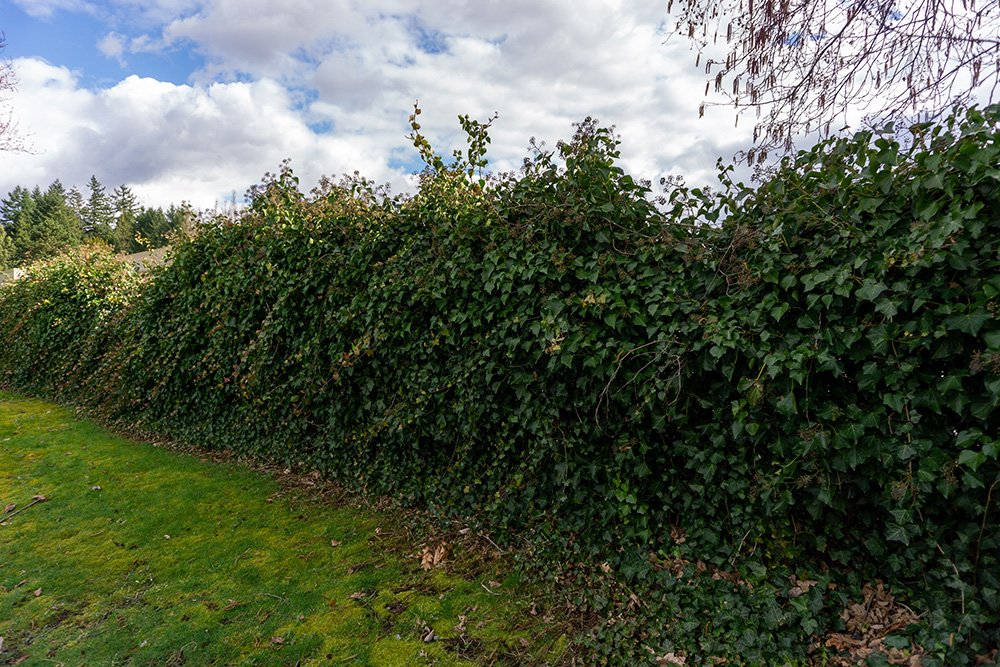City of Nanaimo works towards cleaning up invasive plants
Wallin said it is due to overcrowding and invasive plants out-competing with native plants that cause harm. Photo: The Invasive Species Council of BC
May is Invasive Species Month in British Columbia and the City of Nanaimo is working to remove invasive plants that have taken over.
Mayor of Nanaimo Leonard Krog told CHLY that the City will be spending the month of May working to remove invasive plants throughout the city.
“We have a number of invasive species in Nanaimo and the surrounding area that strangles out native plants that are both valuable and important to our local ecosystem,” Krog said.
The City of Nanaimo is hosting work parties for those interested in getting involved in plant removal. Scotch Broom removal will be happening at Parkway Trail, Koram Park, and Third Street Park, and invasive plant removal will be done at Bowen Park and Diver Lake Park.
Krog said Scotch Broom is one of the most commonly seen invasive plants in Nanaimo.
“It is everywhere, up and down power lines along roadsides, areas that have been logged recently. It's an incredibly invasive species,” Krog said. “And of course, in time, we're all concerned about forest fires, nothing goes up like dry, dead, broom.”
For Nanaimo-ites who are cutting down invasive plants in their backyard, the City will also be holding a drop-off zone on June 1 at Bowen Park. Residents can bring plants such as English Ivy, Scotch Broom, Himalayan Blackberry and Daphne to be disposed of properly.
The mayor said it is important for residents to make sure they are taking the time to manage the invasive plants they may have in their backyard. He said this will help the ecosystem of native plants around the city.
“People often feel powerless in confronting environmental issues, right? Well, the truth is with a little bit of collective effort with your friends and your neighbours, you could make a significant difference here in Nanaimo,” Krog said. “So I encourage people to take advantage of the opportunity to get to know other people and to do something good for your community, get some exercise, save native species and save our local ecology.”
Gail Wallin the Executive Director for the Invasive Species Council of BC said invasive plants are a huge threat to natural diversity.
“Invasive species are those plants and animals that don't belong here. They've been brought in generally by people bringing them in, for something exotic,” Wallin said. “They don't belong here, they actually take over our ecosystems. They put other species at risk, and they cost us a lot of money.”
But Wallin said not every invasive plant causes harm to the ecosystem.
“We have many non-native plants that were welcomed to have, like Daffodils and Crocus, etc,” Wallin said. “They're not native, but they don't take over ecosystem things like Scotch Broom does on Vancouver Island or English Ivy across a lot of B.C.”
She said it is due to overcrowding and invasive plants out-competing with native plants that cause harm. That harm can change the whole ecosystem and then cause harm to insects and animals that live in the area.
Wallin said managing and removing invasive plants will be different for each plant as each will have their own characteristics and ways they produce seeds, or if they reproduce by roots.
“So you need to know your invasive plant, you need to know how it grows, how it spreads, and you actually also need to know whether it's got any toxicity or is it actually dangerous to your skin, your eyes etc,” Wallin said.
Giant Hogweed (pictured) sap can cause burns, blisters and scars when touched by bare skin. Photo: Invasive Species Centre / invasivespeciescentre.ca
According to the City of Nanaimo website on invasive plants, two common toxic invasive plants are Giant Hogweed which closely resembles the native plant Cow Parsnip, and Poison Hemlock which is commonly found in southwest B.C. According to the Invasive Species Council of BC, Giant Hogweed sap can cause burns, blisters and scars when touched by bare skin. The Fraser Valley Invasive Species Society states Poison Hemlock can cause severe skin irritation and issues to the respiratory system
The City of Nanaimo said protective clothing and glasses must be worn when working with the plants to avoid contact with skin. If Giant Hogweed is found in a park or in a public right away, the city can be contacted at 250-755-7515 for removal.
The Invasive Species Council of BC has an online database with invasive plants found around each region of the province for those to identify the plants. Wallin also recommends the I Spy and Identify Invasive app by iNaturalist to use when trying to identify plants.
Wallin said it is important during gardening season to make sure invasive plants are not being planted and while hiking, biking or exploring nature to make sure seeds or plants are not being moved around from one area to another. This could mean clearing gear or boats before moving the items.
If there are invasive plants in someone’s backyard, Wallin said it is important to cut down the plant and dispose of it properly and not compost it.
“Then as a property owner, you have to cut down the room this year, you're going to have some young ones come up next year because there's a seed bank there,” Wallin said. “So stay on it, pull out those young plants when they're there.”
To learn more about the invasive plant work parties or where to drop off invasive plants go to the City of Nanaimo website.
Funding Note: This story was produced with funding support from the Local Journalism Initiative, administered by the Community Radio Fund of Canada.


